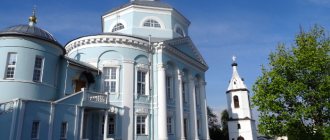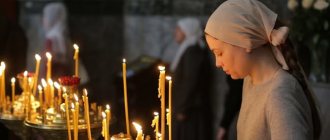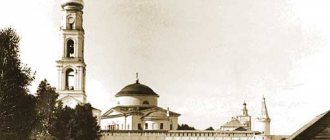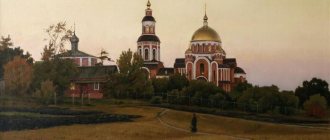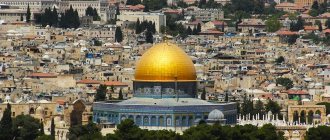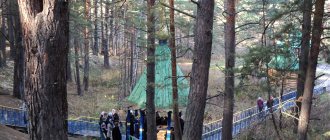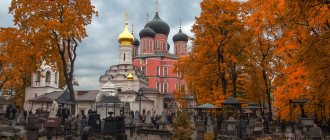The mountainous peninsula of Saint Athos is an autonomous state in the Republic of Greece. To get there, you need to request special permission from the pilgrimage center. But representatives of the fair half of humanity, and even female animals, are not allowed there at all.
On the Holy Mountain - as Mount Athos is officially called in Greece - there are twenty large monasteries, as well as a large number of monasteries, kathismas, hesychastirias and individual cells. All monasteries on the peninsula have the status of stauropegy under the direct control of the Patriarch of Constantinople (since 1312).
Such autonomy is also enshrined in secular official documents (Treaty of Lausanne of 1923). On Athos, unlike other Greek Orthodoxy, life flows according to the Julian calendar (even in official documents).
The main monastery of the “Autonomous Monastic State of the Holy Mountain” is the Great Lavra. But pilgrims are not limited to visiting only this shrine. The second most important after the Great Lavra is the Vatopedi monastery. In this article we will reveal complete information regarding this monastery.
Location of the monastery
This settlement of monks is located on the northeastern tip of the Holy Athos peninsula. It is located approximately halfway between the monasteries of Pantokrator and Esphigmen.
Postal address of the Vatopedi monastery: Athos (Agios Oros, 603 86, Greece). The huge monastery stands on the slope of a high (more than 2 thousand meters) mountain on the coast of Contesso Bay. Near the monastery you can see the ruins of the city of Dion, the same age as Rome (7th century BC).
Vatopedi is surrounded on three sides by mountains, on which vineyards or gardens are planted, and a green pine forest. And from the fourth, its foot is washed by the sea. Together with the Great Lavra, it, with the monasteries of Iveron, Hilandar and Dionysiat, constitutes an outpost of Orthodoxy on the Land of the Virgin.
Unfortunately, now the population of Athos is rapidly declining. According to 2001 data, 2,262 monks lived on the Holy Mountain. But back in 1917, the population of the monastic state was ten and a half thousand people.
How to get to Vatopedi
If you, having received permission to visit Athos, are traveling not with a group of pilgrims, but on your own, you should remember that the land border between Athos, the third “finger” of the large peninsula of Halkidiki, is closed.
No matter where you go from to the Vatopedi monastery - from Ouranoupolis or Neo-Rod, the final part of the journey will have to be done by water. Most tourists come to the first city, because there is a Pilgrimage Bureau, where for 25 euros (1850 rubles) you can buy a diamanitirion (pass to Holy Athos).
The first ferry departs from the pier of Ouranoupolis at 9:45 and docks alternately at Hilandar, Zograf, Konstamonit, Dochiar, Xenophon, St. Panteleimon Monastery and the port of Daphne.
From this last point, a minibus runs to the capital of the mini-state of Athos, the town of Karye (where the Museum of Christian Culture is located). She waits for each ferry to arrive.
The closest way to Vatopedi is from the Zograf or Konstamonit piers. From them you need to cross the peninsula on foot at the narrowest point (from the west coast to the east). The length of the path is about three kilometers.
History of Vatopedi
According to legend, a storm washed a ship with the Virgin Mary ashore on the shore of the Athos peninsula. She was so fascinated by the beauty of this area that she asked God to give her this land as her inheritance. And supposedly the answer was given to her: “Let this earth be a garden and paradise for those who wish to be saved.”
Therefore, Athos is also called “The Lot of the Mother of God.” The Vatopedi Monastery, according to an undocumented legend, was built at the end of the 10th century on the site of a temple built by Constantine the Great and destroyed by Julian the Apostate. And it was founded by three disciples of St. Athanasius of Athos.
In those days, it was customary to take monastic vows at the end of life. And three noble Greeks from Adrianople - Athanasius, Anthony and Nicholas - were among them. They built the Church of the Annunciation, which is now the main church of the monastery.
At different periods, Maxim the Greek, Gregory Palamas, Patriarchs Gennady and Cyril the Fifth, and Archbishop Meletios labored here as monks or underwent novitiate.
A new page in the life of the monastery began around 1989
In 1854 and 1882, the temple and the entire monastery were very badly damaged by fire. One of the famous abbots, Chrysanthus, took over the restoration of many buildings. At the beginning of the 20th century, Turkish authorities took away some of the lands of the Vatopedi Monastery.
A new page in the life of the monastery began around 1989, when the temple finally returned to the cenobitic structure. Then the monastery was transferred to a new brethren, led by Joseph of Vatopedi. Joseph of Vatopedi was a student of the ascetic Joseph the Hesychast.
Joseph of Vatopedi. Photo: hranitel.club
It is worth noting that in the early 2000s the monastery played a fairly large role in the political life of Greece. But many monks did not like such a social life.
And the result was a scandal. Many monks were accused of illegally appropriating territories outside the holy mountain.
July 23
on this day the memory of the Vatopedi saints is celebrated
Such famous people as the Monk Maxim the Greek, Hieromonk Savva, and novices Agapius and Nicodemus labored in Vatopedi. In total, 66 Orthodox ascetics, glorified by the church, lived in the monastery. The Vatopedi saints are commemorated every year on July 23.
origin of name
The name of the Athos monastery of Vatopedi was given by the miraculous event of the deliverance of Prince Arkady, the son of Theodosius the Great, from the depths of the sea. When he sailed from Rome to Constantinople, the ship was caught in a terrible storm near the island of Imvro (located opposite Athos).
The youth Arkady tirelessly called on the Mother of God for help until he was washed overboard by a wave. The retinue landed on the shore and began searching for the prince. Looking into the coastal bushes not far from the dilapidated Church of the Annunciation, the guard saw Arkady sleeping peacefully.
Therefore, the monastery, which was founded here later, received the name “Vatos Pedi”, which translated means “Child’s Bush”. And naturally, the main church of the monastery was dedicated to the Mother of God, or more precisely, to her Annunciation. Therefore, the patronal feast day in the monastery falls on April 7 (March 25 according to the Julian calendar).
History of the monastery
Since ancient times, Mount Athos has been a sacred place. Even in the pre-Christian era, the city of Dion was located here, patronized by Zeus himself. Later, an ancient monastery arose on this site. And only towards the end of the 10th century the construction of the Vatopedi Monastery began on its ruins. To erect such a majestic complex, a lot of money was needed. They were donated by the disciples of St. Athanasius: Anthony, Athanasius, Nikolai, who were wealthy citizens in the world.
Today there is no reliable explanation of where the name of the monastery came from. The most logical belief is that during the reign of Emperor Theodosius the Great, a ship with his young son was caught in a storm and the child fell overboard. Desperate to find the boy, the sailors landed on shore and found him in perfect health near a berry bush. The child said that the Most Holy Theotokos saved him. In honor of such a miracle, the Vatopedi monastery was founded (vato - bush, pedi - child).
The ancient buildings were severely damaged during the period of numerous raids, and complete desolation occurred in 862. In its current form, the complex was built in 972-985. For more than a thousand years, the monastery has held the second position in size and significance among the holy places of Athos.
How is the Vatopedi monastery arranged?
Photos of this monastic settlement often depict it only from the sea side. The fact is that filming is strictly prohibited on the territory of Mount Athos. This is the rule. But no one forbids photographing the monastery from the sea. For women and those men who have not received a pass, cruises around Mount Athos are organized.
Already in the 11th century, a hundred years after its construction, Vatopedi was the second most important and rich monastery after the Great Lavra. This made it possible to found the famous Athos Academy here in 1749, which became the focus of the spiritual revival of the Greek nation.
The Catholicon (that is, the main cathedral) of the Annunciation of the Virgin is not the only one in the monastery. Later and at different times, twelve more churches and chapels were built, five of which are now connected to the temple. The bell tower of the monastery is the oldest on Mount Athos. It was built in 1427.
Most monasteries in Athos have their own monasteries. Vatopedi is no exception. Outside the monastery walls there are nineteen more churches, which are under the direct control of the chief abbot.
Vatopedi also owns two monasteries: St. Andrew the First-Called and Dmitry of Thessalonica. The monastery itself has 27 cells and a hospice house.
Vatoped is a large landowner. This monastery is very rich and has the St. Andrew's courtyard in Istanbul, 150 thousand hectares of fertile soil in continental Greece and Lake Vistonida. The right to the last reservoir is disputed by the state.
History[edit]
Vatopedi Monastery (Greek Βατοπέδι or Βατοπαίδι, from Greek Βατος - bush and παϊς - child, youth; youth bush) is one of the most ancient, rich and extensive on the Holy Mountain, now it is second in honor after the Lavra of St. Afanasia. According to surviving handwritten sources, the monastery was built in the 10th century on the ruins of an ancient monastery. According to oral traditions, the first builder of Vatopedi was the holy Equal-to-the-Apostles Constantine the Great in the first half of the 4th century, but in the same century the monastery was destroyed by the apostate Julian. At the end of the same century, the monastery was restored by the Byzantine emperor Theodosius the Great as thanksgiving to God for saving his son Arcadius from drowning; The origin of the name of the monastery is associated with this: “vato pedi” translated from Greek means “child in the bushes” (the ship sank during a storm, but the baby Arkady was found unharmed in the coastal bushes. The first known abbot of the monastery was the disciple of St. Athanasius of Athos, monk Nicholas Together with Athanasius and Anthony who replaced him, he is revered as the ktitor of Vatopedi.
Vatopedi quickly gained power and already in the second Athos charter (1046) it was listed as the second in honor among other monasteries. Soon, due to the many inhabitants and the majesty of the buildings, the monastery began to be called Lavra.
At the end of the 12th century, the future ktitors of Hilendar labored in Vatopedi: St. Simeon and Savva of Serbia. The monastery survived the difficult years of Latin and Turkish rule, and, like other Athonite monasteries, faced raids by pirates and Catalans. In 1287 it was proclaimed a “royal monastery”. This name appeared repeatedly in various documents in subsequent years, which testified to the particularly close ties of Vatopedi with the Byzantine court. In the 14th century, many prominent representatives of the hesychast movement left the monastery. During the same period, Vatopedi became a refuge for hermits hiding behind its high walls from pirate raids.
Turkish rule with its heavy tax oppression seriously undermined the financial power of Vatopedi. The monastery was also supported by generous financial assistance from the Russian tsars and Moldavian hegemons. During this period, significant land plots were donated to the monastery.
The number of inhabitants of Vatopedi has always remained significant. Attempts were made repeatedly to return to the communal system, which, however, were frustrated for one reason or another. In 1854 and 1882, the monastery was heavily damaged by fires. The restoration of old and construction of new buildings is associated with the name of Progumen Chrysanthos. At the beginning of the 20th century, Vatopedi lost its land holdings in Asia Minor (they were confiscated by the Turkish authorities).
A new page in the life of the monastery opened in 1989 - Vatopedi finally returned to the communal structure. The monastery was transferred to a new brethren - the inhabitants of the New Skete, led by the famous Joseph of Vatopedi (1921–2009), a student of the ever-memorable ascetic Joseph the Hesychast (1897–1959). In the 1990s and early 2000s, the monastery played a large role in the political life of Greece; active missionary activity was led by its active and authoritative abbot, Fr. Evfrem. Not everyone liked the social activity of the monks, which resulted in the so-called “Vatopedi scandal” - the monks were unfairly accused of illegally appropriating certain territories outside the Holy Mountain.
The main treasure of Vatopedi is the host of Saints who shone in it. In Vatopedi, the ascetic laborers were: St. Maximus the Greek and the revivalist of monasticism in Crete, Hieromonk Lavrentiy Dzangarolos. Also revered: the first builders of the monastery, St. Simeon of Serbia and the martyrs who suffered from the Latins. The venerables labored in Vatopedi: Savva Vimataris, Gennady Dokhiar (the Mother of God filled an empty vessel for him with oil), Gennady, abbot of Vatopedi, Savva, the Fool for Christ, Neophyte (the Mother of God revealed to him the date of his blessed death), Nicodemus (elder of St. Gregory Palamas), novices Agapius and Nicodemus. In total, sixty-six ascetics glorified by the Church lived in the monastery. The memory of the Cathedral of Vatopedi Saints is solemnly celebrated annually on July 10 (23).
The monastery played a major role in the enlightenment and spiritual revival of the Balkans during the time of Turkish rule. On the initiative of Abbot Vatopedi Meletius, the Athos Academy was created in 1748, which soon became the leading educational institution in the Balkans. Among her students and teachers, many contributed to the revival of Orthodoxy in this region and played a key role in the history of their peoples. The names of saints are associated with Athonias: Nicodemus the Holy Mountain, Macarius of Corinth, Cosmas of Aetolia, Athanasius of Paros. Today, the ruins of the old Academy building can be seen not far from the Vatopedi Monastery. The Afoniad still exists today. Now it is a boarding school for boys, located on the territory of St. Andrew's Skete.
The cathedral temple of Vatopeda, built in the 10th century, is one of the most extensive on Mount Athos, consecrated in honor of the Annunciation of the Blessed Virgin Mary. Work continues to restore the original frescoes of the catholicon, dating back to 1312. At the entrance to the temple, an amazingly beautiful mosaic image of the Savior appears before the eyes of pilgrims. Also magnificent are the mosaic images of the Annunciation of the Virgin Mary and St. Nicholas the Wonderworker of Myra. The marble iconostasis (972–985) is hidden behind a wooden iconostasis from the 18th century. Some of its parts were used in other monastic buildings. Listing all the shrines and unique works of art of the Vatopedi Catholicon would take a whole book, but it would not convey the impression that this unique cathedral temple makes on pilgrims. On both sides of the porches there are two chapels: on the right side - St. Nicholas the Wonderworker, on the left - the Great Martyr. Demetrius of Thessalonica; above the latter there is also a small chapel in the choir in the name of the Most Holy Theotokos, called “Consolation” or “Consolation”, this miraculous image of the Mother of God resides here.
In addition to the cathedral church, there are nineteen more paraklis in the monastery; According to local custom, on weekdays, after serving matins together, the brethren disperse for the liturgy according to the paraklis. Particular attention should be paid to the Church of the Holy Unmercenaries. According to monastic tradition, it was built by Saint Sava of Serbia. This paraklis preserves the world's oldest fresco depicting St. Gregory Palamas (c. 1400). Vatopedi has the tallest and oldest bell tower on the Holy Mountain, dating back to 1427. It is interesting that Vatopedi was the first of the Athos monasteries to build its own power plant back in 1914. In the refectory, pilgrims should pay attention to the marble tables, which, according to legend, come from the Studite Monastery in Constantinople.
Vatopedi Monastery: belt of the Blessed Virgin Mary and other shrines
What allowed the monastery to acquire such wealth? To prevent the flow of pilgrims from becoming scarce, the monastery, since its foundation, has constantly acquired the relics of saints and miraculous icons. At this time, the list of these relics is quite extensive.
Here you can see a sliver of the Life-Giving Cross - the same one on which Jesus Christ was crucified. Also here rest parts of the holy relics: the Apostle Bartholomew, Demetrius of Thessalonica, Gregory the Theologian, Archdeacon Stephen, John the Merciful, Tryphon, Panteleimon, Harlampius, Bacchus and Sergius, Cyricus, Paraskeva, Theodore Stratelates and Andrew of Crete.
But the main shrine of the Vatopedi monastery is the belt of the Blessed Virgin Mary. According to legend, the Ever-Virgin gave it to the Apostle Thomas. This belt was kept in Constantinople before the Turkish invasion, and then was bought by the King of Serbia, Lazarus.
Touching Athos (diary of a pilgrim). In the monastery of Vatopedi
Touching Athos (diary of a pilgrim). To Athos!
Touching Athos (diary of a pilgrim). In the monastery of St. Paul
Touching Athos (diary of a pilgrim). At the Dionysiates Monastery
Touching Athos (diary of a pilgrim). In Karei and St. Andrew's Skete
Vatopedi is the second in the hierarchy of Athonite monasteries, dedicated to the Annunciation of the Blessed Virgin Mary, one of the most ancient, rich and extensive monasteries. The abbot of the monastery is Archimandrite Ephraim, who became especially famous throughout the world after bringing the Belt of the Most Holy Theotokos to Russia in 2011.
The first shrine that greets us at the entrance to the monastery is the “Shot through” icon of the Mother of God. In 1822, a Turkish soldier fired a shot into the right hand of the Queen of Heaven. After this blasphemy, he went crazy and hanged himself on an olive tree somewhere nearby.
The monastery is large, there are many pilgrims, so checking passports, diamonitirions, accommodation in the archondarik, all bureaucratic formalities require more time, but the constant tsipouro, water and lokum were served. The delay in registration is not at all upsetting, because stopping anywhere in this large monastery is an extra opportunity to see more. Everything here is worthy of close attention...
Archondarik in Vatopedi is a large 4-story building with an elevator. Our group was allocated a two-room cell on the first floor. They left their belongings and went to work by 15.30. The Catholicon is wonderful, large, with beautiful frescoes and mosaics. The abbot of the monastery, Archimandrite Ephraim, was already in his place. Having venerated the icons, he approached him for blessing. He blessed, I would say, very intently, looking at me carefully.
After the service, everyone proceeded in order to the refectory. From the refectory we returned to the temple. To pray and venerate the local shrines: the Belt of the Most Holy Theotokos, which was brought to Russia last year, parts of the Cross of the Lord, the Reed of the Passion of the Lord, the heads of St. John Chrysostom with an ear and St. Gregory the Theologian, the relics of other saints.
I especially paid attention to the incorruptible ear of St. John Chrysostom. The head of the great father and teacher of the Church, John Chrysostom, is kept in a spherical silver ark, which is decorated with gold patterns and precious stones. At the top, like many similar arks, a small oval door opens, through which the bones of the saint’s skull are visible. There is no glass, so we apply ourselves directly to the relics. And in the side window you can see the saint’s incorrupt left ear. It inexplicably rests on the bare bones of the skull, and, apart from this ear, not a single fragment of skin remains on the head of the saint.
We were told the following about this imperishable ear. One day, his cell attendant Proclus saw through a crack in the door in the saint’s office an unknown handsome old man, who, standing behind Chrysostom’s back, was saying something in his ear. This happened several nights in a row. The saint at that time was working on the interpretation of the letters of the Apostle Paul. However, at times Chrysostom was confused by the thought: did his work please God? Does he correctly understand the meaning of some passages of the apostolic writings that are not entirely clear to most people? When Proclus could no longer restrain his curiosity, he decided to ask the saint: who is that venerable old man who inexplicably penetrates into the saint’s office? Chrysostom responded with surprise that when he was working on the manuscript, no one came to him. Looking closely at the icon hanging above the saint’s table, Proclus noted the amazing similarity between the face depicted on the icon and the mysterious old man. It was an icon of the Apostle Paul. Saint John Chrysostom understood then that by the appearance of the apostle the Lord confirmed the godly suitability of this work. Apparently, it was precisely the same ear to which the Apostle Paul repeatedly leaned in a vision, prompting the saint what he, the Apostle, meant in this or that place of his message, and was preserved incorrupt on his bare skull in confirmation of the reality of the ancient miracle...
Here, in Vatopedi, as in other Svyatogorsk monasteries, the tradition of receiving pilgrims is the same and has been sanctified for centuries. Archimandrite Ephraim, the abbot of the Vatopedi monastery himself, talks about this:
“An important factor in the harmonious and in accordance with the commandments of God life of the Athos monastery is the reception of pilgrims. The Athos monastery cannot be imagined without pilgrims. Monastic institutions essentially belong to pilgrims, the people of God. And the specific monks living in the monastery are only its temporary residents and stewards for some time, who, as a sacred covenant, will transfer both the territory and the spirit of the monastery to the next generation of monks, so that they maintain it and continue its traditions so that here pilgrims came and rested.
A person who comes to Athos is not called a visitor, but a pilgrim, because he makes a pilgrimage to the Holy Mountain. You can go on a pleasure trip or go on a business trip, but the pilgrim is making more than just a trip. He goes to the Holy Mountain for a pilgrimage, that is, to some monastery, to reverently bow his head and kiss the honest relics, miraculous icons and venerate local shrines.
The gatekeeper, the responsible monk who carries out obedience at the gates of the monastery, greets those entering as pilgrims, and not as ordinary visitors. After presenting him with the document required for entry to Mount Athos, called diamonitirion, the goalkeeper tells the guests: “Welcome, enjoy your pilgrimage.”
Having met the guests in the archondarik, a room for receiving pilgrims, the archondarik or guest offers them, according to the Athonite charter, tsipouro, lokum and water, and then follows the dialogue/wish: “Bless!” - “The Lord bless!” Next, pilgrims are informed about the internal routine of the monastery, which they must follow: when services are held, what time a meal is offered, when confession is made, etc. At the end, the hotel keeper takes the pilgrims to the room where they will stay, explaining some details regarding the accommodation, and wishes them a “pleasant pilgrimage.”
This is approximately the procedure for receiving pilgrims at the Athos monastery. It may vary in different monasteries, but the essence remains the same. In the face of the pilgrim, the monk sees not a person, but God. As Abba Apollos says about receiving the brethren: “When the brothers come, you need to bow with respect. At this moment we bow to God, and not to them, because it is said: “To see your brother is to see God.” He recognizes God in the person of his neighbor and therefore serves him with joy, with prayer, with humility and with love. This is unselfish love that has a sacrificial character. The monk does not expect to receive anything from the pilgrim, and the pilgrim does not pay for the hospitality shown to him. The monk, the novice who carries out obedience, is not paid by anyone, and he has no contact with money. Hospitality in the monasteries of the Holy Mountain is free, because the Mistress of this place, the Abbess of the Holy Mountain - the Lady Theotokos - wants it so.
Another courtesy that the Athos monasteries provide to pilgrims is the veneration of holy relics and miraculous icons and a tour of the main monastery cathedral - the catholicon. There, pilgrims come into contact with the greatest shrines of the monastery. Because there is nothing on earth more precious and important than the relics of saints. This is the purpose of the Church - to give birth to holy relics, to give birth to saints. The grace of God dwells in the relics of the saints - this uncreated energy, the outpouring of Divine Being. A saint who strives a “good deed” on earth in order to restore connection with God, with his neighbor, with all of God’s creation, in order to be cleansed of passions, practices the acquisition of prayer, love, humility, abstinence and other virtues, and through grace experiences a visitation God, as well as the absence of God, the deprivation of Divine grace, the seeming abandonment of God.
Thanks to constant visits and the withdrawal of grace, the saint acquires a dogmatic consciousness, grows spiritually until he reaches “a perfect man, to the measure of the age of the fulfillment of Christ,” when Divine grace will dwell in him constantly. This grace dwells not only in the soul of the saint, but also in his body, in his entire being. Therefore, after the saint’s dormition, his bones become holy and grace-sharpening relics, proof of holiness, a source of miracles and healings. Of course, this happens because Divine grace dwelt in his body even in earthly life.
By venerating these holy relics, the pilgrim accepts the gift of Divine grace. On the Holy Mountain, the pilgrim has the blessing of touching the relics of many great saints of our Church.
Monastery icons
The monastery has a diptych of the faces of the Pantocrator and the Virgin Mary “Tenderness”. These religious paintings are revered by the Church, as are the images of Empress Theodora, who restored the veneration of icons in Byzantium.
In the Vatopedi Catholicon you can venerate the Holy Trinity. Since the entire monastery is dedicated to the Ever-Virgin, there are many faces of the Madonna in it. At least eight Mother of God icons of the Vatopedi monastery are considered miraculous. This:
- "Pantanassa" (The Queen of All).
- "Comfort".
- "Eleovritissa" or "Dochiarissa" (Eletochivaya or Kelarnitsa).
- "Vimatarissa" (Altar girl).
- "Esphagmeni" (Slaughtered).
- "Antiphonitria" (Forerunner).
- "Pirovolifisa" (Shot through).
- "Paramithia" (Admonition).
The last icon is also of cultural interest, since it was painted in the 14th century.
Vatopedi Monastery on Mount Athos: miraculous icons
1. Icon “ Consolation ” (another name is Consolation, Greek - Paramythia) - as they say in the original sources, from it
“Her voice was to the abbot not to open the doors of the monastery, for the robbers were preparing to rob Vatopedi: the faces of the Mother of God and the Child came to life, sharply changed their position in comparison with the previous one.”
A prayer said in front of such an icon helps in healing from illnesses and ailments, and protects against misfortunes caused by natural disasters and epidemics.
It must be said that a particularly revered copy of the “Otrada” icon is located on the territory of Russia, in the Athos Church of the Novodevichy Convent in Moscow. There is also a list of this image in the Holy Annunciation Monastery in St. Petersburg. In Moscow there is also the Church of the Icon of the Mother of God “Consolation and Consolation” on Khodynskoye Field.
2. Icon “ The Tsaritsa ” (Pantanassa) - it was painted in the 17th century. The image is revered among believers as miraculous. She is also called “The Destroyer of Cancer Ulcers”, she heals cancer patients. People come to the icon with prayer to receive healing from cancer. The date of celebration of the icon “The Tsaritsa” is August 18 (31).
Temples that have revered lists of the “Vse Tsarina” icon:
- Novospassky Monastery, Moscow
- Holy Trinity (All Tsaritsyn) monastery in the village of Taraskovo (Nizhny Tagil diocese, Sverdlovsk region).
- Kiev-Pechersk Lavra (Church of All Saints of the Pechersk, Kyiv, Ukraine)
3. Icon “ Unction ” or “Celarnitsa” (Eleovritissa, Dochiarissa) - an image of the Mother of God (formerly she was called Hodehydria), from which believers feel a special wonderful fragrance. “Eleovritissa” is located in the kitchen of the monastery. According to eyewitnesses, this icon caused a miracle: the monastery vessels were filled with oil (olive oil).
4. The miraculous icon “ Ktitorskaya ” or “Altarmaiden” (Vimatarissa) - this miraculous icon of the Vatopedi Monastery received this name from its location - in the vima (altar) of the cathedral church, on the synphron (high seat).
As the legend says, the icon was hidden from desecration by one of the monks of Vatopedi during the Arab attack on the monastery in the 10th century. 70 years passed and she was discovered again - completely unharmed, hidden in the well of the monastery's altar platform.
5. Icon of the Blessed Virgin “ Slaughtered ” (Esphagmeni) - its holy face is pierced with a dagger: they say that one deacon, angry because the refector did not leave him food, committed such an atrocity. The miracle happened by punishing the monk’s anger: for three whole years the icon killer walked blind, but the prayers of the monastery brethren healed him. The punishment subsequently left only a mark on the hand: after death it turned black and became incorruptible.
6. The miraculous icon of the Mother of God “ Forerunner ” or “Life-Pleasant” (Antiphonitria) - from this holy face in 382, Queen Placidia (Placidia), the daughter of Emperor Theodosius 1st Placidius the Great, heard a warning voice when she was about to enter the cathedral.
7. Icon “ Shot through ” (Pirovolifisa) - a Turkish warrior shot at Her holy image in 1822 (a bullet mark remained on the icon).
As punishment, "Pirovolifis" deprived him of his mind, and then he hanged himself on a tree near the entrance to the monastery. By the way, his body remained unburied.
Other shrines
Pilgrims come to this monastery not only to venerate the holy faces and see the relics of saints and great martyrs. The shrines of the Vatopeda monastery also include a jasper bowl, which was a gift from the Byzantine emperor Manuel II Palaiologos.
This vessel is famous for turning water poured into it into an antidote for snake bites. Also here, during excavations, a tomb was discovered in which all the deceased brothers were buried for a long time. Now their skulls and bones are on public display.
What to see in Vatopedi
First of all, you need to visit the main seven-domed Church of the Annunciation. It is located in the east of the triangular monastery courtyard. The cathedral is entered by a majestic, richly decorated vestibule with marble arches and columns.
From it there are direct exits to the porches - external and internal, as well as to the chapels of St. Nicholas and the Great Martyr Demetrius of Thessalonica. In the choir there is another chapel of the Mother of God icon “Consolation” (or “Consolation”). From the inner porch you enter the temple itself.
Here you can admire the frescoes of the Vatopedi monastery, which were painted in the 14th century by the famous Byzantine master Manuel Panselinos. In the catholicon you can also see four porphyry columns, which were brought here from Rome by order of Honorius, son of Theodosius the Great (9th century).
Ktitorskaya Icon of the Mother of God
The happy father, in gratitude, not only made rich contributions to the monastery, but also donated an icon of the Mother of God made of mastic. It received the name “Ktitorskaya” in memory of the emperor, and was placed in the altar of the Annunciation Cathedral on the Mountain, so it was given a second name - “Altarnitsa”, in Greek - “Vimatarissa” or “Bematarissa”.
Blagoveshchensky cathedral
In 862, the Arabs, ravaging and plundering Crete and Sicily, reached Athos. Fearing the desecration of shrines, one of the ecclesiarchs, whose duties included maintaining order in the temple, hid the icon and cross at the bottom of the well located under the altar platform, sliding a marble slab on top. The icon was preserved, but the monk himself was taken prisoner.
Forty years later he was released. Over the years, the once majestic Vatopedi turned into ruins, and a small brethren worked to restore the monastery. The former ecclesiarch indicated the place under the slab in the altar, and thus the discovery of the holy image and cross took place.
Icon of the Mother of God “Ktitorskaya”
Interesting places for secular visitors
In the 18th century, the Vatopedi monastery on Mount Athos had an extensive library, which made it possible to open an Academy here. But alas, this educational institution, where the outstanding minds of Greece taught, lasted only five years. The “secular” program of the Academy did not please the holy fathers and a conflict arose.
Now the ruins of this high school can be seen to the east of the monastery. But the library has survived. It houses 35 thousand ancient manuscripts, parchment scrolls and printed books. The most valuable pearl of the library is considered to be the 11th century edition of “Geography” by the ancient Greek scientist Ptolemy.
Pilgrims will not see it, but the inside of the altar door (which is hidden from the laity) is very ancient, made of carved wood. Church vestments and vessels are stored in the sacristy of the monastery.
In the monastery courtyard you should go to two chapels: the Holy Belt and Kozma and Damian. It would also be instructive to visit the ossuary (outside the gates of the monastery): look at a row of skulls and understand that everything is perishable.
What should a visitor to Athos know?
Be sure to take your passport with you on your trip to the Holy Mountain. “Face control” there is strict, and women who enter the territory of the monastic republic face criminal liability and several months in prison.
Diamanitirion, which you need to buy in Ouranoupolis, comes in two types: general and with an overnight stay in a specific monastery. It is noteworthy that they cost the same - 25 euros (1850 rubles).
The Vatopedi monastery has its own archondarik - a house in which pilgrims who have purchased a second type pass to Mount Athos are accommodated. This hotel, very spartan in all respects, is run by the Archondaris monks.
While on Mount Athos, pilgrims must observe all the rules of monastic life: do not drink alcohol, do not smoke, do not swear, do not raise your voice, and do not even swim in the sea.
The clothing requirements are also strict. It should cover your shoulders and knees. Pilgrims eat in the monastery refectory twice on a regular day and once during fasting.
Visit to the monastery
Now about one hundred monks permanently live in Vatopedi. Their life is organized in the form of a hostel, and the day is equally divided into rest, work and prayer. The brothers warmly welcome pilgrims and tourists. They are ready to introduce them to the wonderful sights of the complex. Many note a huge spiritual upsurge in the holy land.
Usually a visit to one monastery on Mount Athos takes two days with an overnight stay in a cell. Pilgrims can spend their time as they wish. There are no requirements for the daily routine of visitors. There is also no restriction on religion. Orthodox Christians and adherents of other religious movements are equally welcome here. It is important to take care of your appearance, wear trousers and a long-sleeved shirt. A set of simple rules is presented at the entrance or on the monastery website.
You can get to Mount Athos by water (by boat, ferry) or by land (by car, bus). The most popular transshipment point to Mount Athos is the resort and port of Ouranoupolis. There are no cars driving on the Holy Mountain itself, so you should be prepared for long walks.
You can enter the territory of the monasteries with permission (Diamonitirion). This “visa” to the holy land is issued remotely by sending all documents by email.
Only men are allowed to enter Athos. For more than a thousand years, there has been a strict ban for women not to set foot on these lands. Representatives of the fair sex can only be content with a sightseeing sea excursion off the coast of Athos.
Service Schedule
A special feature of Athos is that different monasteries measure time in their own way. The day begins either at sunset or at sunrise, and only rare monasteries live according to the time zone of Greece.
At the holy monastery of Vatopedi, pilgrims are allowed into the liturgy, which begins at 5:15 pm ET. It lasts an hour, after which you are invited to a meal.
At 20:15 Compline begins, which pilgrims can also attend. At 2:50 they wake up for matins (in the Church of Panteleimon). And then the Holy Liturgy begins.
